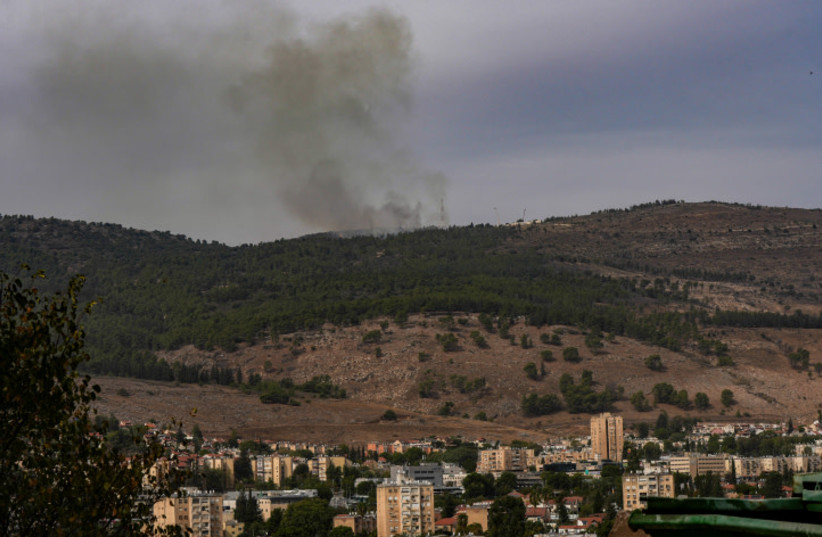The Defense Ministry on Thursday announced that 427 houses of northern residents have had structural damage by Hezbollah rockets and anti-tank missiles since October.
Some 80 of the houses have experienced direct hits and much greater damage.
Around 80,000 northern residents evacuated their homes in October under fire by Hezbollah once the war between Israel and Hamas in Gaza started.
Defense Ministry Director-General Maj. Gen. (Res.) Eyal Zamir, visited northern Israeli towns and farms along the Lebanese border on Wednesday to see firsthand the state of damage and the announcement was timed to his visit.
Yediot Ahronot published similar, but different numbers on Thursday, stating that based on figures it obtained from Israel's Tax Authority were over 500 damaged houses.

427 number only covers cases with structural damage
A ministry spokeswoman said that the Tax Authority also takes into account property damage beyond structural damage, whereas the 427 number is only structural housing damage.
The Yediot report also said that the three communities hit hardest were: Metulla, 131 damaged houses, Shlomi with 130, and Manarah with 121.
Another six communities have significant damage, including Kiryat Shmona, with a larger number of communities having more minor damage.
A statement by the ministry said that its "Northern Horizon" Directorate is actively assessing the damage in numerous communities along the northern border and coordinating initial rehabilitation efforts in Israeli towns where security conditions permit.
Guided by Defense Minister Yoav Gallant, the "Northern Horizon" Directorate serves as a liaison between the IDF, the Ministry of Defense, and the regional councils in northern Israel.
Recognizing the challenges ahead, Zamir stated that he is committed to ensuring the security and safe return of residents to their homes.
Despite those assurances, Hezbollah has shown no sign that it is willing to withdraw all of its forces from the border with Israel to a point north of Lebanon's Litani River - what Jerusalem has said would need to happen to allow the northern residents to return.
Quiet plan to return residents upon 75% Hezbollah withdrawal
The Jerusalem Post recently learned that a mix of ideas are quietly being entertained by the defense establishment to get northern residents to return even if only around 75% of Hezbollah forces withdraw north, provided that all of the terror group's attacks have ceased and the IDf commits to permanently maintaining two divisions to defend the northern border - a 100% increase in defensive troops.
No politicians are discussing this publicly as, at the present time, they would likely be verbally attacked by the northern residents and others for expressing such views that do not completely deal with the Hezbollah threat.
Zamir's visit was attended by the Head of the Ma'ale Yosef Regional Council, Shimon Guetta, Deputy Director General and Head of the Planning Division at the Ministry of Defense, Itamar Graf, Head of the 'Northern Horizon' Directorate, Brig. Gen. (Res.) David Suissa, Commander of the Home Front in the Northern Command, Brig. Gen. (Res.) Alon Friedman and other senior officials.
